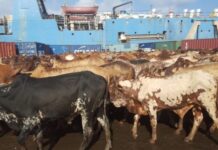Maize production in Kenya is set to drop drastically across the country due to erratic rains, army worm and disease, a food nutrition assessment report shows.
Agriculture PS Hamadi Boga confirmed an estimated 30% drop and said rapid food and nutrition mid-season assessment report conducted between November 28, 2021, and December 4, 2021, shows maize production is expected to drop as much as 70% in marginal agricultural areas. In addition, the area under crops countrywide is estimated at between 50 and 65% below normal. Boga said the average long-rain season maize harvest is usually around 36 million bags.
“But we are estimating around 28 million bags from the long rains harvest. This is due to erratic rains where most areas received 30 per cent less rainfall,” he noted.
Production from the short rains will also be low due to depressed rains in parts of Eastern and Central regions that rely on a crop for this season. The PS said the expected harvest for the short rains is usually about seven million bags, but this year, the estimate is about 3.5 million bags.
Deferred planting
The 2021 short rains mid-season assessment was carried out by a multisector team from UN agencies and the government through the National Drought Management Authority. The report said harvesting is ongoing in the high-potential counties such as Uasin Gishu and Trans Nzoia.
“The late start to the current short rains has badly delayed or even deferred planting. The area planted across Kenya is estimated to be 50 to 60 per cent below normal. Crops have wilted due to a lack of moisture and rainfall in the arid and semi-arid counties,” the short rains assessment read.
In addition, production in the current growing season has been further slowed by fall army worm infestation and maize lethal necrosis disease. The maize is expected to be adequate. Boga assured the country has enough maize until March.
“These issues will be factored into planning this year. We expect imports from Uganda and Tanzania between January and February but we will keep monitoring the situation and production in Kenya, Uganda and Tanzania,” the PS said.









[…] Source […]
Comments are closed.